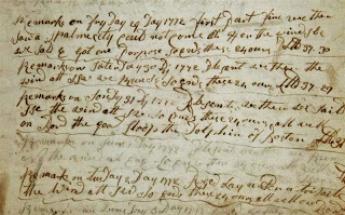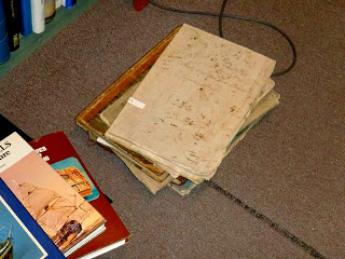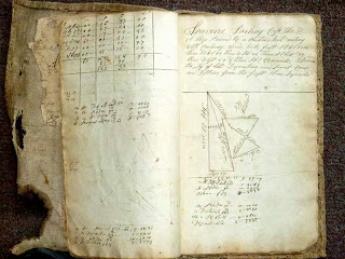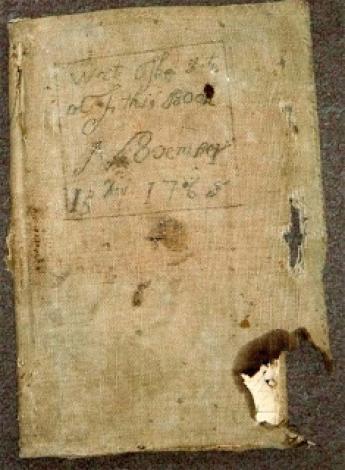Antiquarian Booksellers' Association of America Ten Pound Island Book Company
The Rare Book Trade - Hit Me Again, Please

By Greg Gibson
A couple of theorems about the biz are in play this week:
1. Most of our profits in this trade come from occasional “big hits,” but our viability depends on being able to survive the trek through the valleys between those big hits.
2. Every time I think I've figured this business out, it changes.
Thus the inadequacies of the general used book store concept, circa 1980, led to the development of specialties at Ten Pound Island. Thus the failure of those specialties to meet the economic demands of an escalating real estate market drove Ten Pound Island out of the retail trade in 1993. Thus the computer and the fax machine put an end to TPI's flourishing postcard-driven nautical book search operation, which itself - owing to the need for a place to store the thousands of books accumulated in the course of this evolution – put TPI back in the retail business. Thus the rise of the Internet and the degradation in the value of low end maritime books, which had hitherto been Ten Pound Island's stock in trade, resulted in TPIs penultimate exit from the retail trade. Thus the paradoxical combination of rising cost and increased availability of rare books drove TPI into manuscripts, ephemera and documents. Thus the failure of provincial book fairs, which had hitherto been a major source of sales and stock, forced TPI into further dependence upon the Internet and the cultivation of institutional customers. Thus sales at TPI dwindled from thousands of mid range transactions to hundreds of larger ones. Thus the intervals between cash infusions increased. Thus the owner of TPI woke up one morning at 3 am with his hair on fire, recalling theorem #1 and thinking, “I've got to get more low end stuff out there on the market, to fill in the gaps between big hits.
Thus, as recounted a couple of blog entries ago, I surprised myself by purchasing that collection of low end maritime books. Thus I hired the guy down the street to start putting stuff on eBay for me - $200 - $5000 books that have been sitting on my shelves for years. No auctions, just “Buy it Now” and “Best Offer.” Get those doggies to start paying their rent! Thus I started digging through piles of old uncataloged stuff, looking for material I could use to fill those gaps between paychecks.
Yesterday afternoon I was diligently working my way through a stack of relatively undistinguished manuscript items.
I'd already cataloged Captain Clement Ryder's account book for two coasting schooners – the “Velocity” and the “Columbia” $150; "Abstract Log Ship 'Carlisle Castle' on a Voyage from London Towards Melbourne. Commencing May 23rd 1885, Ending Aug 31st 1885... Kept by Arthur F.B. Portman 2nd Mate." $350; and “Accounts of Coasting Schooner James Martin, 1870 – 1872.” $150.
The next item in the stack was a raggedy, chaotic mishmash of an old navigation lesson book and a couple of scribbled log entries from...
Wait a minute. 1772?
And look at this, right on the first page - “Saw a spalmeccty could not come at her the wind S & E we sald & got one porpoise...”
An American whaling log from 1772!
And in a single lovely moment I ceased trudging through the valley and was surveying the world around me from the pinnacle of another big hit. It had been sitting on the floor of my office for the past two months in a pile of junk.
I love this business.
Manuscript. Whaling Log of "Good Sloop Dolphin of Boston Isaak Freeman Commander 1772 Wrote by Zenas Phiney.".Folio, unpaginated. Fifteen pages of manuscript entries.
This is the daily log of an early whaling voyage not documented by Lund or noted in any other reference source. It records a voyage off the Western Islands and "from the Grand Banks to Cape Cod" from the end of May to the beginning of October, 1772. The log begins with a faint, and difficult to decipher, list of the crew. The first entry is May 22. Daily entries give names of vessels and captains, and there is much talk of ships spoken and who got and did not get whales. The "Dolphin" catches a porpoise and chases a sperm whale. Then on "SaterDay 27 Day of June 1772. Fine weather Saw plenty of whales chast most all day but cold not strike till a bought 7 a clock we got aught and struck one." On July 1 "We finished triing out our whale which made 80 barrals." A week later Phiney reveals his status as a colonial, "As wrote July 8 day 1772 for the 11 year of the rain of our Sovering Lord George the the third wrote by Zenas Phiney." The log continues with tight, crabbed entries, noting weather, latitude, sail handling and ships and people spoken and gammed with, until September 10. The log then jumps to the other end of the book and assumes a tabular form, with columns for time of day, speed, bearing, winds, position, and remarks - still kept by Phiney, and continuing without interruption from September 11. In this latter part the “Dolphin” is on the Grand Banks, then headed for Cape Cod. The log ends, "I have bene to sea from the 6 Day of May to the 4 Day of October which is 5 months except 2 Days and have not let my feet on land for the time." This is followed by a 23 page navigation lesson book, with instructions and diagrams in someone else's fine hand, written only on the rectos, and with Phiney's rough notes below and on the versos of many of the leaves. Then 6 pages of Phiney's notes on navigation, including rules for calculations employing the "Sons Dicklination." Then what looks to be an invented practice log of an "Intended Voige", and another of an "Entended Voige, each 2 pages in length.
American whaling logs of this vintage are rare. Sherman cites only seventeen pre-1800 examples held in American institutions. Very few pre-Revolutionary American logs have ever been offered in the trade, and most of these have been in poor condition or incomplete. The log of the "Susanna", 1784, sold at Swann’s in the second Barbara Johnson sale for $18,000 in 1997. It was incomplete, sixteen pages in length. Swann claimed, “This log represents one of the earliest logs in existence and also one of the most complete of the early examples” This log predates that one by a dozen years and is equal in length and detail Hand bound in canvas covers. $12,500
***
Posted on Bookman’s Log, presented here by permission of the author. Pictures: Bookman’s Log.




